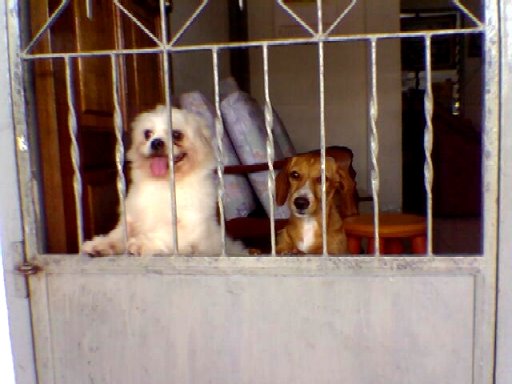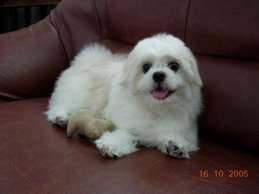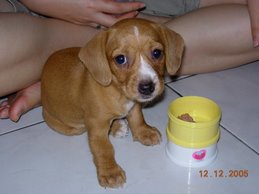Article From SubmitYOURArticle.com: Boxer Dog Breed Profile
Description: The Boxer is a strong and agile dog,
standing 21 to 25 at the withers and weighing
between 55 and 75 pounds. The bitches are
slightly smaller. Boxers have short hair which
lies close to the dog's body. The Boxer has two
basic color variations - brindle and fawn. White
Boxers occur more rarely and are not accepted
some dog organizations. The Boxer's muzzle is
truncated and the lower jaw is undershot. The
tail of the Boxer is usually docked, although
this is no longer allowed in Europe.
History: The Boxer is descended from a now
extinct dog called the Bullenbeisser and the
English Bulldog. The Boxer came into being in
Germany in the 19th century and was used
initially in blood sports like bull baiting and
dog fighting. As they are sturdy, powerful dogs,
Boxers were also used to herd cattle, hunt wild
boar, and pull carts. Because they are
intelligent, easily trained, and eager to please,
Boxers soon found themselves used in circuses and
on the stage.
There is some confusion as to how the name of the
Boxer came about. While some believe that it
comes from the dog's tendency to bat around with
its front paws, others think it is just a
mistaken translation of various German words.
Regardless, the Boxer does seem to use its paws
expressively.
Temperament: The Boxer, while an excellent guard
dog, is widely known for its extreme good nature.
This dog makes a wonderful, loyal companion and
is kind and patient with children (a trait of
mastiff type dogs in general). This dog is lively
and enjoys playing with friends, either human or
canine. The Boxer is protective of its family,
but will tend to hold an intruder rather than
bite. The Boxer also has a reputation for being
something of a clown. Boxers love to be close to
their humans and suffer if separated from them.
Health Issues: Probably the most common health
problems in Boxers are cardiomyopathy
(inflammation of the heart muscle) and other
heart diseases. Hip dysplasia can also occur. The
Boxer's owner should take care to keep the dog
quiet for an hour after eating to help prevent
bloat. Tumors are fairly common in Boxers, too.
As with many short-faced breeds, Boxers may react
negatively to certain anaesthetics, especially
acepromazine. Be sure that your veterinarian is
aware of this if your Boxer need surgery.
Grooming: Because the Boxer is a short-haired
dog, the coat presents few grooming problems. As
the Boxer sheds moderately year round, a good
brushing several times a week will keep the coat
in good condition. Regular baths are unnecessary,
the coat benefits from its natural oils. Check
the dog for ticks and fleas if it has run in
brushy areas.
Living Conditions: The Boxer needs to be kept in
the house during cold or inclement weather. The
animal's short coat offers it little protection
from climatic conditions. The Boxer's short
muzzle makes it difficult to tolerate extremes of
heat or cold. But, even more importantly, the
Boxer needs to be close to its human family. The
Boxer has strong emotional needs that cannot be
met in a kennel.
----------------------------------------------------
For more information on the Boxer, Training and
Puppies for sale visit the page below.
http://www.scottspuppypalace.com
EasyPublish this article: http://submityourarticle.com/articles/easypublish.php?art_id=87195














.jpg)






.jpg)

0 comments:
Post a Comment